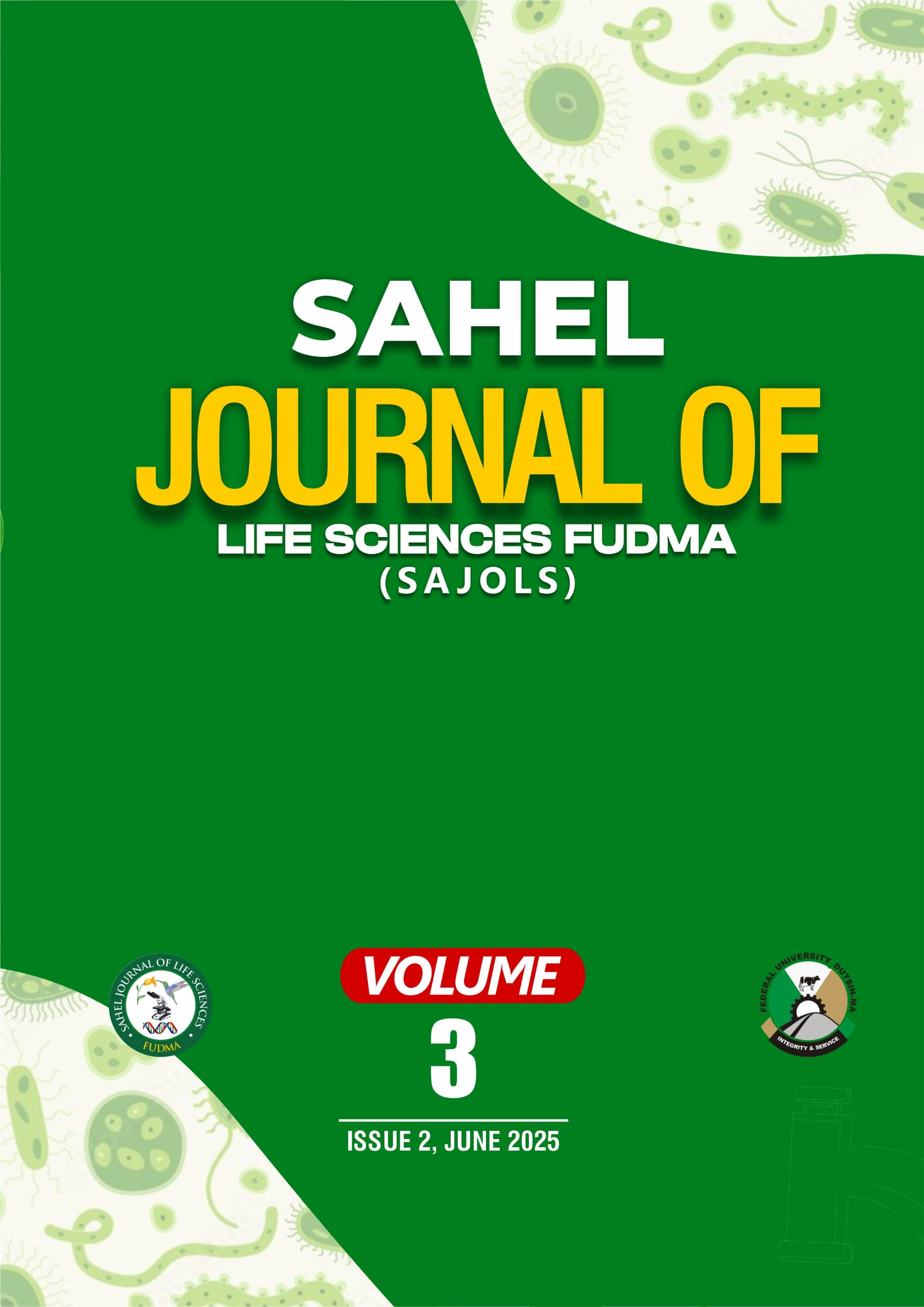Comparative Phytochemical Analysis and Medicinal Properties of Neem (Azadirachta indica) and Eucalyptus (Eucalyptus globulus) Plant
DOI:
https://doi.org/10.33003/sajols-2025-0302-38Keywords:
Anti-inflammatory; Antimicrobial; Azadirachta indica; Eucalyptus globulus; Phytochemical Analysis; Solvent extraction; Traditional medicineAbstract
This study presents a comparative phytochemical analysis and evaluation of medicinal properties in Azadirachta indica (Neem) and Eucalyptus globulus (Eucalyptus) leaf extracts. Using ethanol, methanol, and aqueous solvents, phytochemical screening revealed distinct profiles: Neem exhibited high concentrations of alkaloids (2.50 mg/g) and saponins (4.80 mg/g), while Eucalyptus was rich in tannins (2.50 mg/g). Quantitative analysis confirmed significant differences (p < 0.05) in bioactive compound distribution, with ethanol proving most effective for extraction. The presence of these phytochemicals correlates with known therapeutic properties—Neem's alkaloids and flavonoids suggest antimicrobial and antioxidant potential, while Eucalyptus's tannins and terpenoids support anti-inflammatory and respiratory benefits. Methodologically, leaves were collected from Katsina State, Nigeria, dried at 40°C, and extracted via maceration and sonication. High-Performance Liquid Chromatography (HPLC) and Gas Chromatography-Mass Spectrometry (GC-MS) were employed for compound identification. Statistical analysis (t-test) highlighted significant interspecies variations (p < 0.05), with Neem showing superior antimicrobial markers and Eucalyptus excelling in anti-inflammatory constituents. The findings validate traditional uses of both plants while underscoring their complementary roles in herbal medicine. Neem's broad-spectrum antimicrobial activity aligns with its application in infections, whereas Eucalyptus's tannin-rich profile justifies its use in respiratory therapies. This study advocates for further research, including in vitro antimicrobial assays and clinical trials, to optimize therapeutic formulations. It also emphasizes sustainable cultivation and standardized extraction protocols to enhance reproducibility. By bridging ethnopharmacological knowledge with scientific validation, this work supports the integration of Neem and Eucalyptus into evidence-based herbal medicine and pharmaceutical development.


